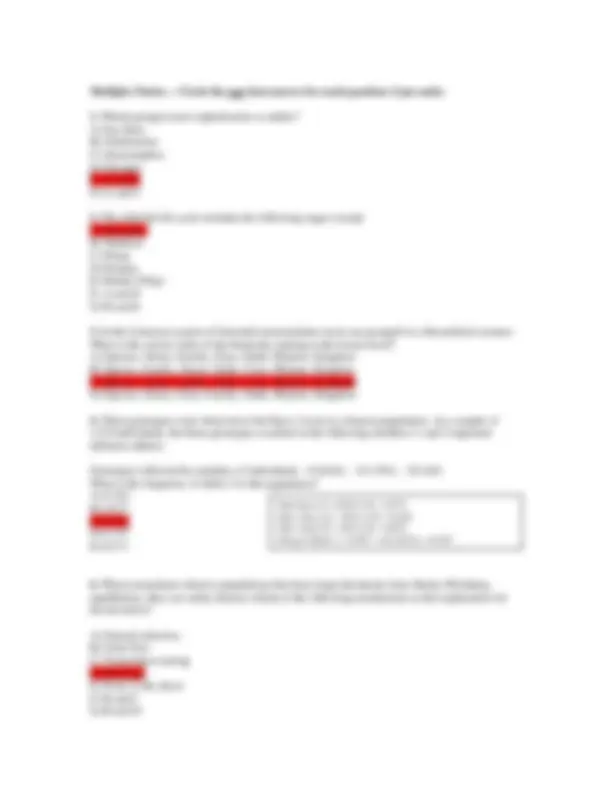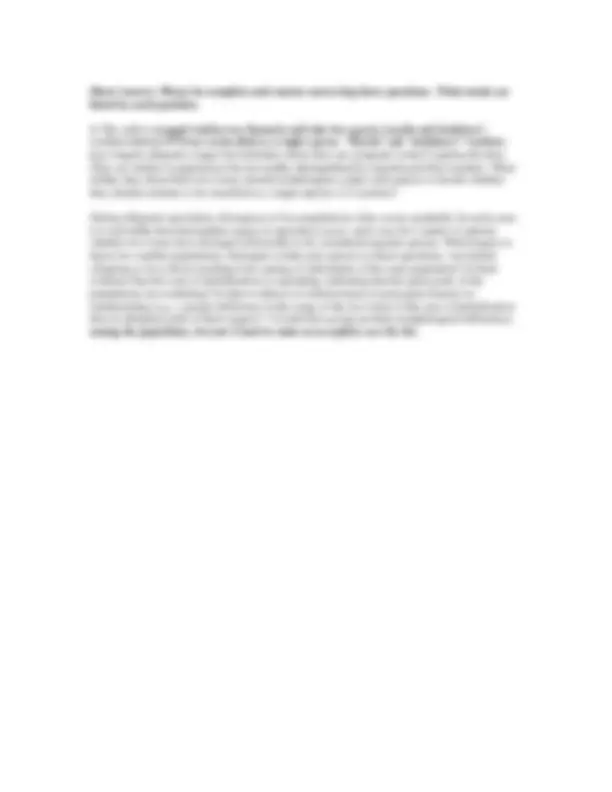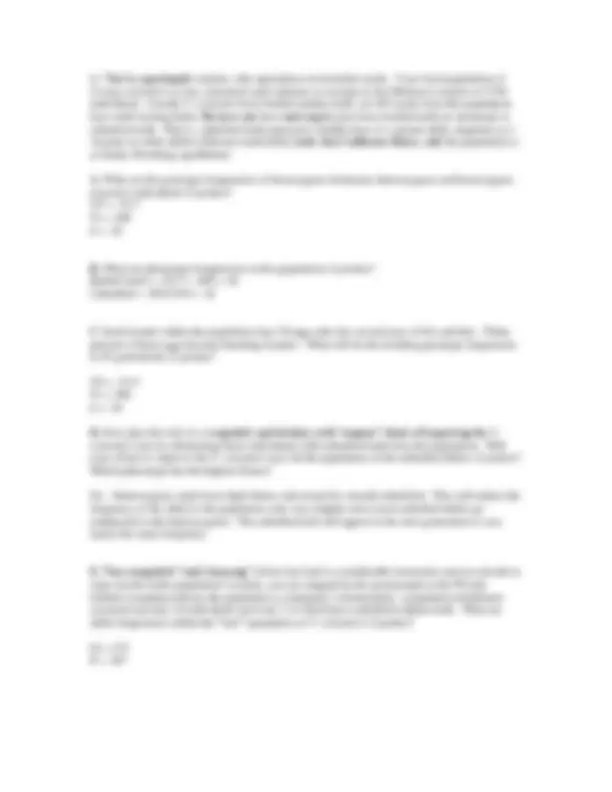





Study with the several resources on Docsity

Earn points by helping other students or get them with a premium plan


Prepare for your exams
Study with the several resources on Docsity

Earn points to download
Earn points by helping other students or get them with a premium plan
Community
Ask the community for help and clear up your study doubts
Discover the best universities in your country according to Docsity users
Free resources
Download our free guides on studying techniques, anxiety management strategies, and thesis advice from Docsity tutors
Review questions and answers for a biology exam focusing on topics such as speciation modes, myriapods, alfred russel wallace, choanocytes, artificial selection, coleoptera, evolutionary reversals, and linnaean system of nomenclature. Multiple choice questions, short answer questions, and definitions of biological terms.
Typology: Study notes
1 / 5

This page cannot be seen from the preview
Don't miss anything!




BIO 112: Organisms, Evolution, and Ecosystems Review 1 Instructions: This review is worth 100 points or 20% of your course grade. You may not consult any references or any other person while working on this review. You will likely need a calculator for this exam. Your signature at the top of the page signifies that the work is yours alone and is pledged under the Honor Code.
You will have 50 minutes to complete this review. Print legibly; I can only grade what I can read. For each question or part to a question, limit your answers to the space below each question, unless otherwise specified. You should read the questions very carefully and write clearly, completely, and concisely. Point values for each question are listed below.
Define 10 terms. Be as specific as possible. Limit answer to the space provided (2 pts each).
Parapatric speciation – speciation mode that results from variations in mating frequencies over a continuous, often large, geographic range. Some gene flow occurs among neighboring populations; however the populations at the extremes of the range are often reproductively isolated from one another. Examples of parapatric speciation include the Greenish Warbler and Ensatina salamanders.
Myriapod – centipedes and millipedes. Arthropods that a characterized by elongate, segmented truck and have many legs. Exoskeleton consists of an unwaxed cuticle.
Alfred Russel Wallace – a skin trader and biologist that independently proposed the theory of natural selection identical to Darwin’s proposed theory.
Choanocytes – flagellated cells that line the interior of sponges. They beating of the flagella help sponges filter nutrients and other food items from the water.
Artificial Selection – the intentional breeding of animals with certain traits over animals that lacked these traits. Often used in livestock, dogs, cats, and other human-associated animals.
Coleoptera – The beetles, which happen to be the largest group of anthropods – 330,000+ species.
Evolutionary Reversal – A character that may have reverted from a derived state back to an ancestral state.
Short Answer. Please be complete and concise answering these questions. Point totals are listed by each question.
1. The yellow-rumped warbler was formerly split into two species (myrtle and Audubon’s warblers) but in 1973 was reclassified as a single species. “Myrtle” and “Audubon’s” warblers have largely allopatric ranges but hybridize where they are sympatric in the Canadian Rockies. They are similar in appearance but are readily distinguished by experienced bird watchers. What further data about these two forms should ornithologists collect and analyze to decide whether they should continue to be classified as a single species (12.5 points)?
During allopatric speciation, divergence of two populations often occurs gradually. In such cases it is inevitable that intermediate stages of speciation occur, and it may be a matter of opinion whether two forms have diverged sufficiently to be considered separate species. With respect to these two warbler populations, biologists would seek answers to these questions: Are hybrid offspring as fit as those resulting from mating of individuals of the same population? Is there evidence that the zone of hybridization is expanding, indicating that the gene pools of the populations are combining? Is there evidence of reinforcement of prezygotic barriers to interbreeding (e.g., a greater difference in the songs of the two forms in the area of hybridization than in allopatric parts of their ranges)? I would also accept are their morphological differences among the populations, but you’d need to make an acceptable case for this.
A. What are the genotype frequencies of homozygous dominant, heterozygous and homozygous recessive individuals (2 points)? TT =. Tt =. tt =.
B. What are phenotype frequencies in this population (2 points)? Barbed teeth = .3317 + .488 =. Unbarbed = 495/2750 =.
C. Each female within the population lays 20 eggs after her second year of life and dies. Thirty percent of these eggs become breeding females. What will be the resulting genotype frequencies in 85 generations (2 points)?
TT =. Tt =. tt =.
D. Now play the role of a misguided snail dictator, with “eugenic” ideals of improving the V. nylanderi race by eliminating those individuals with unbarbed teeth from the population. Will your efforts to improve the V. nylanderi race rid the population of the unbarbed alleles (2 points)? Which phenotype has the highest fitness?
No. Heterozygous snails have high fitness and cannot be visually identified. This will reduce the frequency of the allele in the population only very slightly since most unbarbed alleles go undetected in the heterozygotes. The unbarbed trait will appear in the next generation in very nearly the same frequency.
E. Your misguided “snail cleansing” efforts has lead to considerable frustration and you decide to wipe out the entire population! Luckily, you are stopped by the good people at the Woody Guthrie foundation before the population is extirpated. Unfortunately, a population bottleneck occurred and only 16 individuals survived, 3 of which have unbarbed radular teeth. What are allele frequencies within the “new” population of V. nylanderi (2 points)?
Q =. P =.